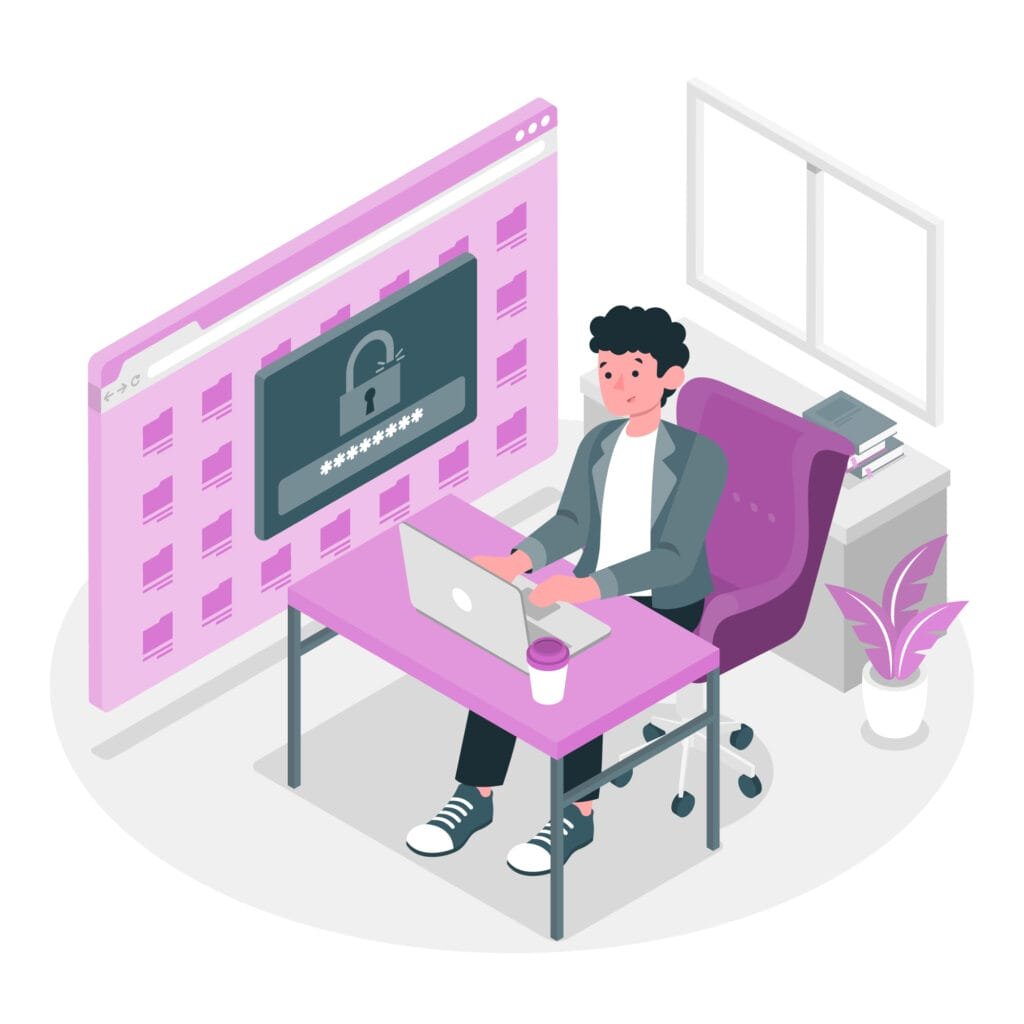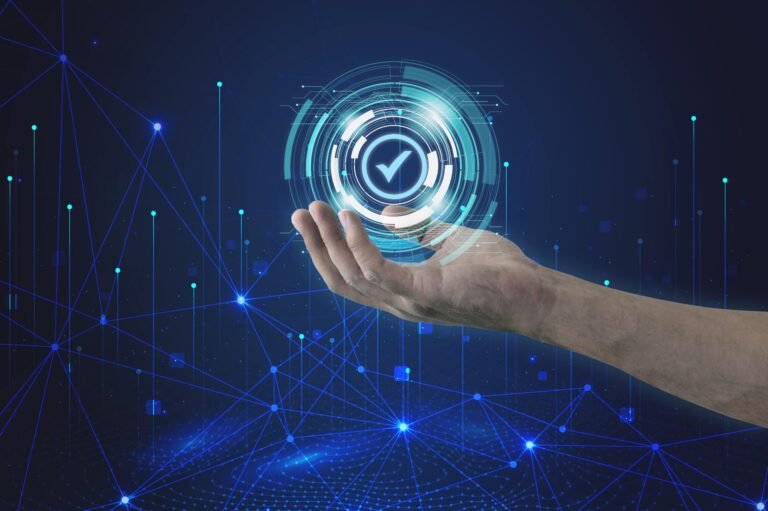RGA Cyber Attack Exposed- Are You Safe Online?
Introduction
The recent cyberattack against the Reinsurance Group of America (RGA) has shocked the internet community in our linked society. Evaluating our internet safety precautions becomes essential as we learn more about this breach. The purpose of this article is to explain the RGA cyberattack, consider how it affects specific people, and offer suggestions for improving internet security.
What is RGA?
Leading the reinsurance sector globally, The Reinsurance Group of America (RGA) specializes in offering insurance and risk management solutions to customers across the globe. Since its founding in 1973, RGA has expanded to rank among the biggest and most reputable reinsurers in the world.
Overview of RGA:
Reinsurance is a specialized area of the insurance business in which RGA works. Reinsurers such as RGA offer coverage to primary insurers directly, in contrast to primary insurers that sell insurance policies directly to individuals or businesses. This implies that an insurance company can pay a premium to a reinsurer such as RGA to transfer a portion of its risk exposure to reduce it.
Significance in the Financial Industry:
Reinsurers such as RGA play a vital part in the insurance market’s operation. Reinsurers assist in keeping the insurance market stable and ensure that policyholders are sufficiently protected even in the case of significant disasters or large-scale disasters by taking on the risks that primary insurers would otherwise bear.
Global Presence:
RGA has offices and subsidiaries located strategically throughout major insurance markets, and it operates in over 60 countries. RGA’s global reach enables it to offer customized reinsurance solutions to a wide spectrum of clients, including multinational enterprises and small regional insurers.
Innovative Solutions:
RGA is renowned for using innovative methods in insurance and risk management. To keep ahead of developing trends and anticipate its clients’ changing demands, the organization makes significant investments in research and development. Because of its dedication to innovation, RGA has established itself as a reliable partner in the insurance sector.
The Cyber Attack
The Reinsurance Group of America (RGA) cyberattack exposed the persistent threat of cybercrime in today’s digital environment, sending shockwaves through the insurance and banking sectors.
Date and Method of the Attack:
Because investigations are still underway and security concerns exist, the precise date of the cyberattack on RGA is yet unknown. But since it seems to have happened recently, RGA’s cybersecurity staff has acted right away.
The entire technique used by the hackers to breach RGA’s systems is still unknown. But it’s more likely that the attackers used advanced strategies like malware, phishing, or taking advantage of holes in RGA’s network infrastructure.
The extent of the Breach:
External forensic teams and RGA’s security professionals are still determining the entire scope of the breach. According to early reports, the attackers may have accessed private company information, financial data, and unique identifiers without authorization.
Concerns have been voiced over the breach’s possible effects on RGA’s business operations, clients, and the insurance sector as a whole. RGA is making a concerted effort to contain the intrusion, minimize the harm, and fortify its cybersecurity defenses while investigations are ongoing.
Response and Recovery Efforts:
In response to the cyber attack, RGA has initiated comprehensive response and recovery efforts to address the breach and minimize its impact. This includes:
- activating its incident response procedures right away to stop the breach and reduce additional harm.
- working together to investigate the assault and find the perpetrators with law enforcement organizations and outside cybersecurity specialists.
- informing the impacted people and organizations about the security breach and providing advice on how to stay safe.
- To stop such attacks, it is improving its cybersecurity infrastructure and adding more security measures.
Even with these precautions, the aftermath of the RGA cyberattack is a sobering reminder of the ongoing threat posed by cybercriminals. It emphasizes how crucial strong incident response procedures and proactive cybersecurity measures are to defend against cyberattacks.
Implications for Individuals
The Reinsurance Group of America (RGA) cyberattack has serious ramifications for all parties associated with the organization, including stakeholders, clients, and staff. Its effects extend beyond the organization itself. It is essential to understand these ramifications to implement the appropriate security measures to reduce risks and preserve personal data.
Risks to Personal Information:
The increased risk to personal data is one of the main effects of the RGA cyberattack. Sensitive information belonging to those who have dealt with RGA as workers, beneficiaries, or policyholders may have been compromised. Names, addresses, social security numbers, and financial information are examples of personal identifiers.
Such personal data breaches can have serious repercussions, such as financial fraud, identity theft, and illegal access to private accounts. In the wake of the cyberattack, people must continue to be on guard and keep an eye out for any odd activity on their credit reports and financial accounts.
Reputational Damage:
The cyberattack may potentially cause reputational harm to people who are professionally connected to RGA, such as partners or employees. Trust and reputation can be damaged by affiliation with a company that has experienced a cyberattack, both personally and in professional settings.
Colleagues, clients, or other stakeholders may pose queries or express concerns to individuals regarding the protection of their data or the integrity of their business ties. In the wake of a cyberattack, reputational harm can be reduced by open communication and prompt action to remedy issues.
Financial Consequences:
People impacted by the RGA cyberattack may occasionally face financial repercussions as well. This could include monetary damages incurred directly as a result of fraud or identity theft in addition to indirect expenses like credit monitoring services or legal bills that are related to reducing the effects of the breach.
Financial well-being may also be affected by the disruption created by the cyberattack for people who depend on RGA for financial services or insurance coverage. People must take appropriate steps to protect their interests and keep them updated about any updates or remediation efforts made by RGA.
Emotional Toll:
In addition to the obvious repercussions, the RGA cyberattack may have psychological impacts on those impacted. Anxiety, tension, or panic can arise from the invasion of privacy and the feeling of vulnerability that results from having personal information violated.
When under a lot of stress or uncertainty, people must prioritize taking care of themselves and get help when necessary. Making connections with dependable family members, friends, or mental health specialists can help you deal with the emotional fallout from a cyberattack by offering support and direction.
Security Measures by RGA

The Reinsurance Group of America (RGA) has improved its cybersecurity posture, contained the breach, and protected sensitive data by implementing several extensive security measures in response to the cyberattack. These initiatives demonstrate RGA’s dedication to defending its stakeholders’, clients’, and workers’ interests against changing cyber threats.
Immediate Response Protocols:
RGA initiated its incident response procedures as soon as it became aware of the cyberattack to stop the breach and reduce additional harm. To ascertain the extent and type of the infiltration, this involved severing compromised accounts, isolating impacted systems, and doing an in-depth forensic investigation.
RGA was able to stop the unauthorized access to new data and lessen the immediate impact of the cyberattack by quickly deploying its response teams and putting containment measures in place.
Collaboration with External Experts:
Realizing how serious and intricate the cyberattack was, RGA called in outside forensic investigators and cybersecurity specialists to help with the investigation and cleanup. Through the use of their specialist knowledge and resources, these professionals assisted RGA in identifying and resolving vulnerabilities in its infrastructure and systems.
By working closely with these outside partners, RGA was able to obtain important knowledge on the strategies, methods, and approaches used by the attackers, which made response and recovery operations more successful.
Enhanced Cybersecurity Measures:
Following the cyberattack, RGA conducted a thorough analysis of its cybersecurity policies, practices, and controls to identify areas in need of development and fortify its defenses against potential dangers. Among them were:
- To improve access controls and stop unwanted access, multi-factor authentication (MFA) should be implemented across all systems and applications.
- Improving encryption and network segmentation techniques will protect confidential information and reduce the possible consequences of future security breaches.
- strongly identifying and fixing vulnerabilities through regular penetration tests and vulnerability assessments.
- ramping up funding for employee education and awareness campaigns to encourage a responsible and vigilant culture around cybersecurity.
RGA seeks to reduce its vulnerability to cyber-attacks and enhance the confidentiality, integrity, and availability of its data assets by proactively addressing holes in its cybersecurity posture and investing in proactive security solutions.
Online Safety Best Practices
Assuring online safety is crucial in the current digital era for preserving personal data and defending against cyberattacks. People need to follow best practices whether they communicate, transact, or browse the web to reduce risks and improve their cybersecurity posture. The following crucial advice on internet safety can assist people in successfully navigating the digital world:
1. Use Strong, Unique Passwords:
- Make complicated passwords by combining special characters, numbers, and letters.
- Avoid from utilizing information that can be guessed, including pet names or birthdays.
- To avoid having numerous accounts compromised by a single hack, use unique passwords for each online account.
2. Enable Two-Factor Authentication (2FA):
- Enable 2FA wherever possible to add an extra layer of security to your accounts.
- 2FA typically requires a second form of verification, such as a code sent to your mobile device, in addition to your password.
3. Stay Vigilant Against Phishing:
- Unsolicited calls, emails, or messages asking for private or sensitive information should be avoided.
- Contact the organization directly via official means to confirm the validity of requests.
4. Keep Software Updated:
- Update operating systems, programs, and antivirus software frequently to fix security vulnerabilities and defend against known threats.
- If at all feasible, turn on automatic updates to ensure that security fixes are installed on time.
5. Secure Your Network:
- Use a secure Wi-Fi network with WPA2 encryption to prevent unauthorized access to your internet connection.
- Change default router passwords and use a strong, unique passphrase to protect your network from intruders.
People can significantly reduce their risk of exposure to cyber-attacks and prevent the exploitation of their digital assets and personal information by adhering to these online safety best practices. Keep in mind that cybersecurity is a shared responsibility. By being proactive in promoting online safety, we can all help to make the digital world a safer and more secure place for everyone.
Rising Cyber Threats
The widespread use of digital technology in recent years has significantly improved our lives by bringing unprecedented connectivity and convenience. But these developments also bring with them the increasing potential of cyberattacks. Everyone is vulnerable to the dangers presented by cyber threats, from individual users to major corporations. Preventing possible breaches requires being aware of the nature of these dangers and maintaining vigilance. Here are some information regarding the growing dangers posed by cyberspace and the importance of being vigilant:
1. Sophisticated Cyber Attacks:
- Cybercriminals are always changing how they get around security measures and access private information without authorization.
- Cybersecurity professionals and companies face significant challenges due to advanced approaches like ransomware, phishing, and zero-day attacks.
2. Targeted Attacks on Individuals:
- Individuals are increasingly targeted by cybercriminals seeking to steal personal information, financial data, and credentials.
- Social engineering tactics, such as pretexting and spear phishing, are used to manipulate individuals into divulging sensitive information or clicking on malicious links.
3. Data Breaches and Identity Theft:
- The personal data of millions of people is being exposed due to an increasing number of data breaches.
- Payment card information, social security numbers, names, and addresses are examples of stolen data that can be exploited for financial fraud, identity theft, and other illegal activities.
4. Exploitation of IoT Devices:
- The spread of Internet of Things (IoT) devices gives cybercriminals additional ways to undermine network security.
- IoT device vulnerabilities, including those in wearable technology and smart home appliances, can be used to start massive botnet assaults or obtain illegal access to private networks.
5. Supply Chain Attacks:
- Cybercriminals are targeting supply chains to infiltrate trusted vendors and suppliers, leveraging their access to launch attacks on larger organizations.
- Supply chain attacks can have far-reaching consequences, compromising the integrity of products and services and undermining customer trust.
Protecting Personal Information

today as personal data becomes more digitalized and networked, protecting it from unwanted access and misuse is crucial. People need to be proactive in protecting their data and reducing the risks associated with cyberattacks. The following are some crucial procedures for protecting private data when using the Internet:
1. Use Strong Passwords:
- For every online account, come up with a different, complicated password that combines capital, numeric, and special characters.
- Don’t use information that can be noticed, including names, birthdays, or well-known phrases.
2. Enable Two-Factor Authentication (2FA):
- To provide your accounts an additional degree of security, enable 2FA whenever you can.
- In addition to your password, 2FA usually requires a second form of verification, like a code texted to your mobile device.
3. Limit Sharing on Social Media:
- To manage who can view your posts and personal information, go through and modify your privacy settings on social media sites.
- When exposing private information to the public, such as your full name, address, or birthdate, exercise caution.
4. Be Wary of Phishing Attempts:
- Exercise caution when clicking on links or opening attachments in unsolicited emails, messages, or social media posts.
- Look out for signs of phishing, such as misspelled URLs, generic greetings, and requests for sensitive information.
5. Secure Your Devices:
- Install and regularly update antivirus software, firewalls, and security patches on your devices to protect against malware and other threats.
- Use encryption and biometric authentication features to secure sensitive data stored on your devices.
A person’s risk of exposure to identity theft, financial fraud, and other harmful acts can be decreased and their personal information can be better protected from cyber threats by implementing these practices and exercising vigilance. Remember that protecting personal data is not only your obligation but also a necessary first step toward creating a more secure and safe online environment for all users.
Cybersecurity for Businesses
Cybersecurity is becoming a top responsibility for companies of all sizes and sectors in the digital age, not just for IT departments. Because cyber threats are becoming more frequent and sophisticated, firms need to be proactive in protecting their data, systems, and reputation. Businesses aiming to improve their cybersecurity posture should take into account the following important factors:
1. Conduct Risk Assessments:
- Assess the cybersecurity risks that your company is exposed to regularly, taking into account potential weak points, threats, and effects.
- Determine which systems and important assets need more protection, then rank the importance of cybersecurity spending.
2. Develop a Cybersecurity Strategy:
- Create a thorough cybersecurity plan with goals, objectives, and action plans for protecting your company’s resources and information.
- When formulating your plan, take into account variables including risk tolerance, financial limitations, legal restrictions, and industry best practices.
3. Implement Security Controls:
- Put strong security controls and procedures in place to guard against ransomware, phishing, malware, and insider threats, among other common cyber threats.
- Using intrusion detection systems, firewalls, antivirus software, and encryption technologies are a few examples of what this may include.
4. Train Employees:
- Regularly teach staff members about cybersecurity and raise their awareness of best practices, common dangers, and their part in protecting sensitive data.
- Encourage staff members to swiftly report any suspicious activity or possible security incidents.
5. Enforce Access Controls:
- Implement access controls and least privilege principles to limit access to sensitive data and systems only to authorized personnel.
- Regularly review and update user permissions and access levels to reflect changes in job roles or responsibilities.
Businesses may reduce risks, secure critical data, and uphold confidence among stakeholders, partners, and consumers by putting cybersecurity first and taking proactive steps to block cyber threats. To stay ahead of cyber threats in the ever-changing threat landscape of today, keep in mind that cybersecurity is a journey rather than a destination.
Importance of Cyber Insurance
Businesses confront serious risks of cyberattacks and data breaches in today’s digital environment, where cyber threats are always changing and getting more sophisticated. Organizations can now effectively manage financial losses and reputational damage from cybersecurity events by utilizing cyber insurance. The following explains why cyber insurance is crucial for companies:
1. Financial Protection:
- Financial protection against the costs of cyberattacks and data breaches is offered by cyber insurance. These costs include incident response and remediation costs, legal fees, and regulatory fines.
- Cyber insurance can assist with paying for the expenses of alerting impacted parties, offering credit monitoring services, and recovering systems and data in the case of a cyber disaster.
2. Business Continuity:
- In the event of a cyberattack or data breach, cyber insurance can assist organizations in continuing to operate by paying for additional costs incurred during the recovery process, income loss, and business disruption.
- This may reduce the negative effects that cyber attacks have on a company’s operations, reputation, and financial results.
3. Risk Transfer:
- Businesses can assign some of the financial risks related to cyber threats to insurance providers by obtaining cyber insurance.
- Businesses can shield their assets and free up funds for essential operations by acquiring cyber insurance, which relieves them of the financial burden of damages and liabilities resulting from cyber disasters.
4. Compliance Requirements:
- Businesses can comply with contractual and regulatory obligations about data protection and cybersecurity by getting cyber insurance.
- Adequate cybersecurity measures, including cyber insurance coverage, are mandated by numerous industries and jurisdictions for organizations to adhere to contractual obligations and regulatory standards.
5. Reputational Protection:
- Cyber insurance can help businesses protect their reputation and brand image in the aftermath of a cyber incident.
- Cyber insurance can help businesses mitigate reputational damage and restore trust and confidence among customers, partners, and stakeholders by providing financial resources to cover the costs of public relations and crisis management efforts.
Conclusion
In conclusion, the Reinsurance Group of America (RGA) cyberattack serves as a sobering reminder of the widespread threat cybercriminals offer in today’s linked digital landscape. Everyone is vulnerable to the hazards of cyberattacks and data breaches, including individuals, companies, and entire industries. Organizations can reduce the impact of cyberattacks and improve their cyber resilience by emphasizing cybersecurity, implementing best practices, and utilizing solutions like cyber insurance.
The importance of proactive cybersecurity measures and readiness in the face of changing threats is the main lesson to be learned from the RGA cyber attack. Employers need to make significant investments in strong cybersecurity defenses, put in place detailed incident response plans, and encourage a security-aware and accountable work environment. Organizations can lower their risk exposure and improve the protection of their data, systems, and reputation by keeping up with developing threats, being watchful for phishing and social engineering schemes, and routinely updating security controls and processes.
FAQs
1. What is cyber insurance, and why do businesses need it?
Cyber insurance is a type of insurance coverage designed to protect businesses against financial losses and liabilities resulting from cyber-attacks and data breaches. Businesses need cyber insurance to mitigate the financial impact of cyber incidents, maintain business continuity, and protect against reputational damage.
2. What does cyber insurance typically cover?
Cyber insurance policies can vary, but they typically cover expenses related to incident response and remediation, including legal fees, forensic investigations, notification costs, credit monitoring services, and business interruption losses. Some policies also provide coverage for third-party liabilities, such as lawsuits and regulatory fines.
3. How much cyber insurance coverage do I need?
The amount of cyber insurance coverage needed depends on various factors, including the size and industry of your business, the types of data you handle, and your risk tolerance. It’s essential to conduct a thorough risk assessment and work with an insurance provider to determine the appropriate level of coverage for your specific needs.
4. What are some common cybersecurity best practices for individuals?
Some common cybersecurity best practices for individuals include using strong, unique passwords, enabling two-factor authentication, being cautious of phishing attempts, securing devices and networks, and staying informed about emerging threats and best practices.
5. How can businesses enhance their cyber resilience?
Businesses can enhance their cyber resilience by investing in robust cybersecurity defenses, implementing comprehensive incident response plans, fostering a culture of security awareness among employees, staying informed about emerging threats, and leveraging tools such as cyber insurance to mitigate financial risks.







